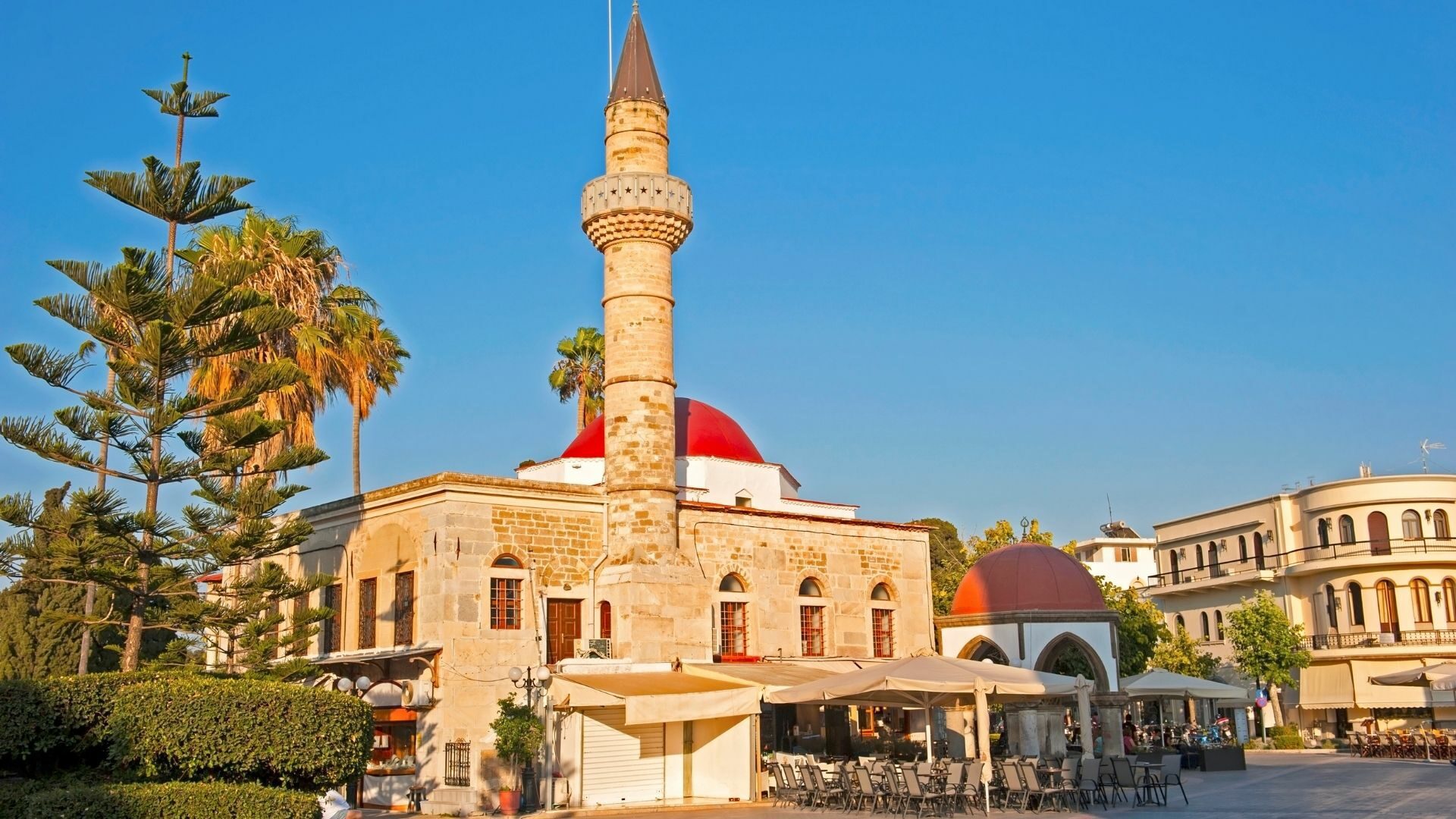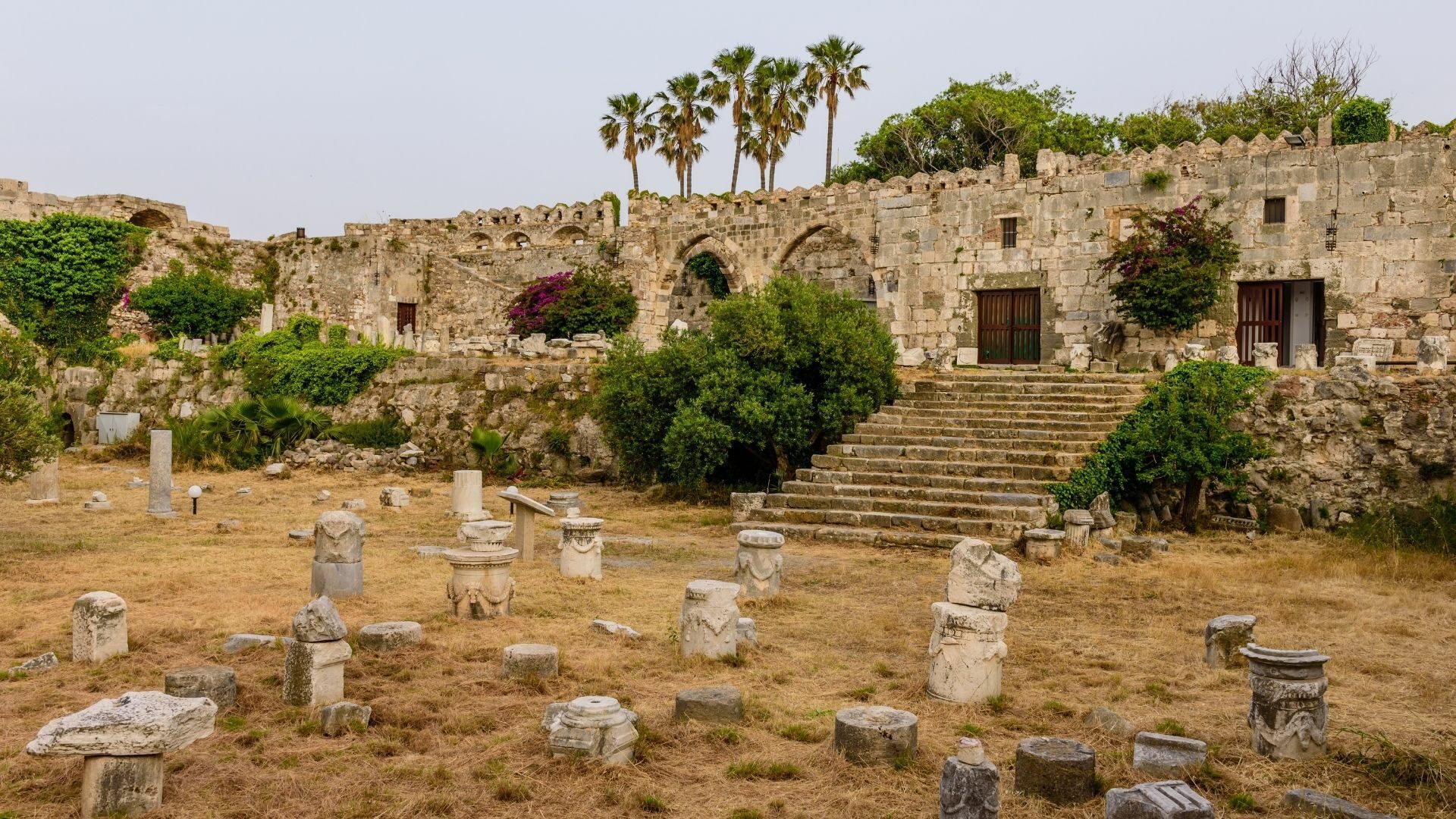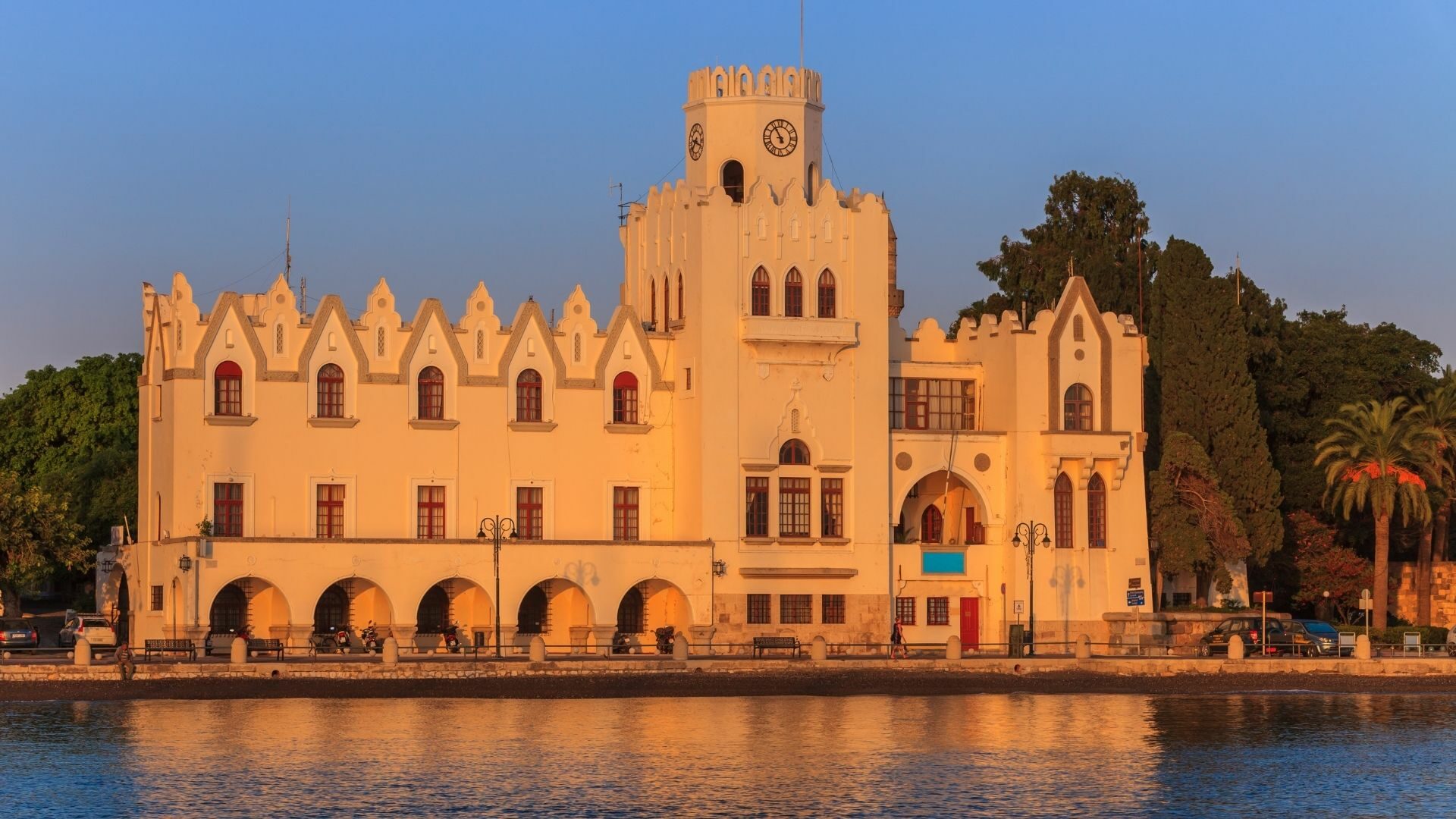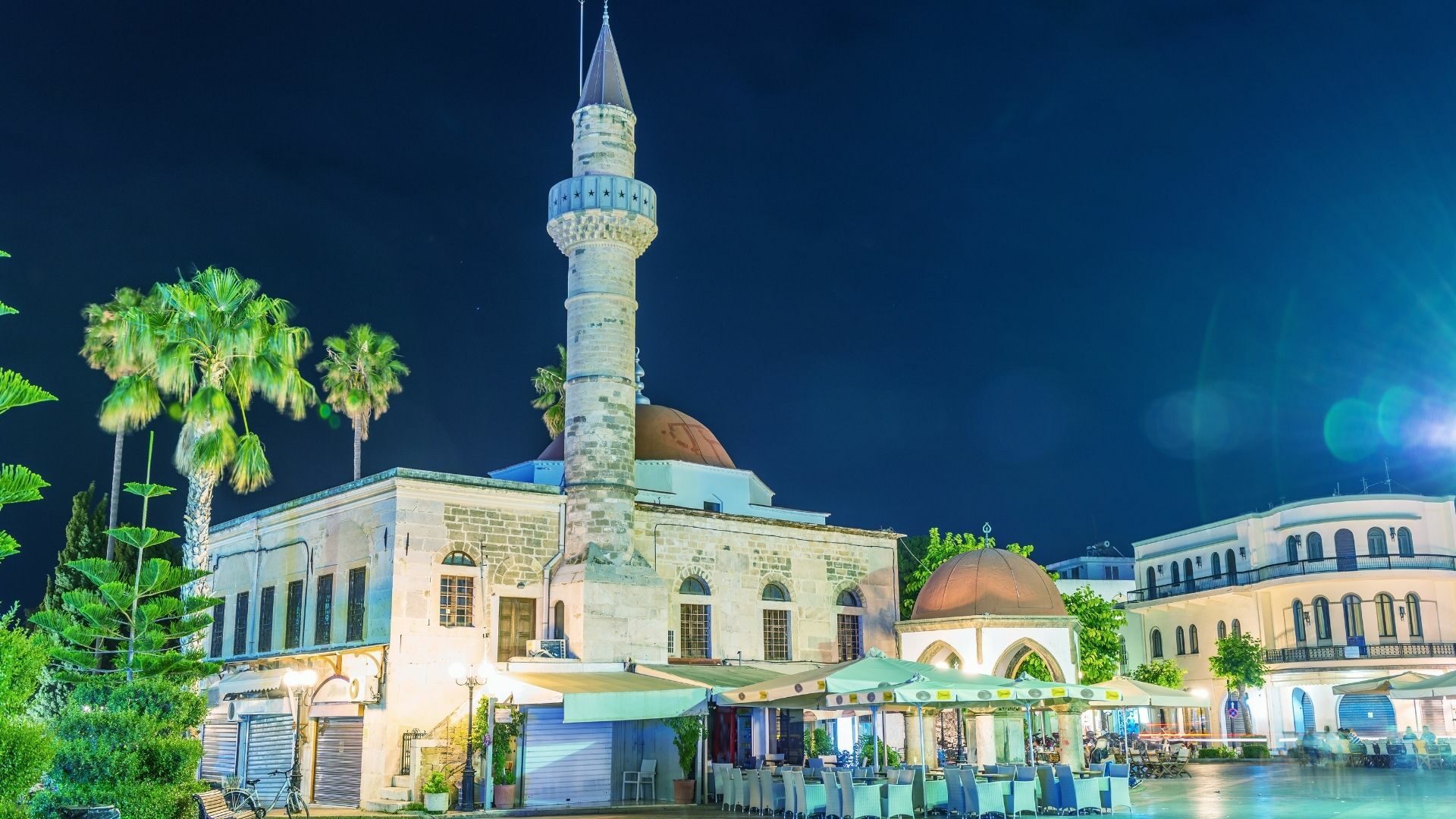Summer is here and you don’t know where to go? But in Kos where else?
Don’t even think about it!
The destination is Kos!
So that will be our motto and I will explain to you why.
Two words about Kos, very generally.
The endless beaches with turquoise waters, the vegetation, the rich water sources, the ancient and medieval monuments,
as well as the impressive Italian buildings characterize the island of Kos.
It is the third largest cluster of the Dodecanese.
It is just 4 miles off the Turkish coast.
The name “Kos” probably comes from the daughter of the mythical king Meropas, who was called Kos.
Kos is the birthplace of Hippocrates, the “father of medicine”.
It was already inhabited during the Neolithic Period.
The Knights of Agios Ioannis conquered the island in the 14th century,
reinforced the older castles and built new fortifications.
During the Turkish occupation, the island was attacked by several invaders.
In addition, during the Italian occupation some really important, monumental public buildings were constructed.
The island was officially united with Greece in 1948.
It covers an area of 290 km2.
Its coastline is 112 km.
No those are not the reasons to go, I’m just telling you two things just so you know.
You’re going, where you’re going, to not have them on your mind?
The sights of the island.
Do you like going to an island and walking around it?
Then you should definitely go:
In Liberty Square.
They consider it the centre of the modern city.
It is surrounded by three huge buildings inherited from the Italian era:
the municipal market, the club (old name: Palace of Fascism) and the Archaeological Museum.
An imitation of a Roman spa.
At the end of the square is the Defendar Mosque.

In the ancient city.
Which was the capital of the island from 366 BC.
You can see the market, the Hellenistic Doric temple,
the altar of Dionysus, the sanctuary of the harbour and the stoa.
In addition, the sanctuary of Hercules, part of the ruins of the northern wall.
Then the Roman baths, the luxurious Roman mansions with their high mosaic floors.
Finally, the Roman residence, as well as the Roman conservatory with a capacity of 750 seats.
In Platanos Square or Lodzia Square.
One of the most tourist spots of the city.
At the Lodzia mosque.
It was built in 1786.
On its walls you can see embedded pieces of ancient and medieval monuments.
In Hippocrates’ Platanus.
It is directly opposite the Lodzia mosque.
Under the shade of this tree, the great doctor used to teach his apprentices
and examining his patients, so the tree is over 2,500 years old!
The circumference of its trunk exceeds 10 meters and its giant branches shade the entire square.
On the Phoenix Street as well as the medieval bridge.
The Asclepion.
It’s about 3.5 km. SW from the town of Kos and was the most famous Asclepieion of all Greece.
It was built in the 4th century, after the death of Hippocrates.
Among other places, it is worth going to the stoa, the complex of Roman thermal baths,
and the altar dedicated to the Sun.
Also, to Imera, Hecate, and Mahon (son of Asclepius),
the Ionic temple of Asclepius, and of course, the great Doric temple of Asclepius.
Experiences that should not be missed!
Of course if you’re a good walker and you go to all of these,
I’ve saved the best for last!
The castles
The Castle of the Knights or the Castle of Neratzia.
Built on the ruins of an ancient fortress, it is right at the entrance of the port of Kos town.
Its construction began in the 14th century by the Knights Hospitallers,
due to the delays caused by the Ottoman raids.
The castle has two circles of walls and was an island until the beginning of the 20th century,
as the location of the current Finike Avenue,
there was a moat filled with sea water that separated the castle from the land.
The castle has a connection to the mainland near the Hippocrates Platanos site,
with a bridge that still exists today on Phoenician Avenue.
In Antimachia, 4.5 km SE of the village there is a very well preserved medieval castle.
Ruins of the Byzantine castle still exist on the top of a hill in Pyli,
offering guests a stunning view of the nearby islands,
while more castle ruins are also on the hilltop in Kefalos.



Its unique beaches!
Now you’re going to say, that’s a lot of history, son.
I know I’ve stunned you, but I have the solution for those who only love beaches and diving,
but especially for those who like to live their summer by the sea, with an icy cocktail.
The island has many sandy coasts and many dreamy and magnificent beaches.
They have something for every taste and every mood.
To give you an indication, I’ll tell you a few:
The sandy beach of Nomikos-Barbagianni.
Its extent is from the town of Kos to the surrounding areas.
It is an organized beach with umbrellas and sunbeds, water sports, restaurants and bars.
Milos beach with fine sand.
Awarded with the blue flag of the European Union.
There is a beach bar with loud music and frequent concerts.
Carnagio beach is in a quiet area, with fine sand and shallow waters
and if you have small children it’s just the ticket.
Psalidi beach, with rocks, which makes it ideal for snorkeling.
There are also restaurants and taverns.
Tigaki beach with white sand and shallow waters awarded by the EU with a blue flag.
It is an organized beach with umbrellas and sunbeds, water sports, restaurants, taverns and bars.
It is ideal for wind surfing.
Kardamena beach with fine sand and shallow waters.
It is an organized beach with umbrellas and sunbeds, water sports, restaurants and bars.
I hope you are convinced to visit Kos this summer, or even in winter, why not?
It is an island that caters to the desires of younger and older people alike.
Finally, don’t forget to go to the centre of the island at night,
for drinks, coffee or whatever your appetite!


